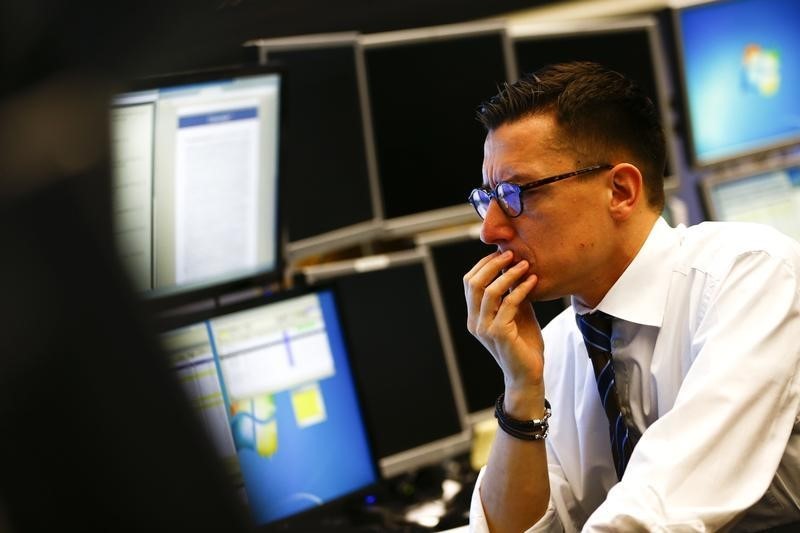By Wayne Cole
SYDNEY (Reuters) - Asian share markets crept ahead on Thursday after upbeat U.S. economic data took some of the sting out of the latest Brexit scare, while the Australian dollar briefly dipped as the country's triple A credit rating came under threat.
The European market were also seen starting firmer, with the FTSE (FTSE) and CAC (FCHI) seen up around 1 percent and the DAX (GDAXI) rising 0.8 percent. U.S. S&P futures (ESc1) were little changed.
The Aussie initially fell half a U.S. cent to $0.7470
The agency had warned it may act after inconclusive elections over the weekend suggested the next government would have a hard time getting reforms through to law.
However, investors are less sensitive to ratings these days given so many countries were downgraded in the wake of the global financial crisis and the Aussie soon steadied at $0.7511.
Likewise, Australian bond futures barely budged
Elsewhere in Asia, the mood was one of relief that Brexit fears had faded for the moment. MSCI's broadest index of Asia-Pacific shares outside Japan (MIAPJ0000PUS) rose 0.8 percent.
Japanese shares were restrained by a strong yen and the Nikkei (N225) slipped 0.9 percent.
Still, it was notable that while bond markets have been signalling recession, equities had stayed fairly resilient.
"The most optimistic interpretation is that markets believe a limited regional shock is going to result in a significantly easier stance for global monetary policy," David Hensley, an economist at JPMorgan (NYSE:JPM), said in a note.
"At ground zero, the Bank of England has indicated it may soon cut rates. There is widespread speculation the BOJ and ECB will ease, a view we share."
More importantly, JPMorgan believes the Bank of England will revive its quantitative easing process while the UK government reverses course on austerity and loosens fiscal policy, which could be a green light to fiscal expansion globally.
NO FED HIKE UNTIL 2019?
Sentiment got a welcome lift from a survey showing activity in the giant U.S. service sector hit a seven-month high in June as new orders surged and companies hired more.
That helped the Dow (DJI) rise 0.44 percent, while the S&P 500 (SPX) gained 0.54 percent and the Nasdaq (IXIC) 0.75 percent.
Minutes from the U.S. Federal Reserve's June policy meeting confirmed what was already suspected - that officials were concerned ahead of the Brexit vote, which subsequently erased $3 trillion from global equities over two days.
The British pound remained vulnerable at $1.2975
The safe-haven yen was well bid at 100.73 per U.S. dollar
Markets have assumed the uncertainty over Brexit, and the resulting strength in the U.S. dollar, has made it very unlikely the Fed will be able to hike rates again this year.
Fed fund futures for December <0#FF:> imply a rate of 38.5 basis points, almost exactly where the effective rate is now. Remarkably, the market is not fully priced for a hike until the start of 2019.
Treasuries have in turn enjoyed an historic rally that has taken yields to record lows right out to 30 years. The benchmark 10-year note (US10YT=RR) was paying just 1.37 percent, some way below the rate of U.S. inflation.
Indeed, analysts estimate over $10 trillion of government debt around the world offer only negative yields, a nightmare for fund managers and insurance companies who have committed to future pension payments at positive rates.
In commodity markets, oil prices recouped some lost ground on the better U.S. data and expectations for a sharp drop in crude stockpiles.

NYMEX crude futures (CLc1) were quoted 25 cents firmer at $47.68 a barrel, while Brent (LCOc1) added 23 cents to $49.03.
